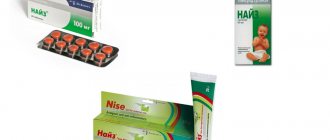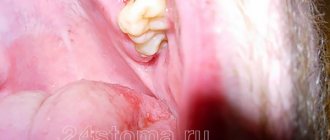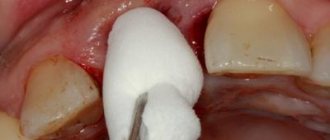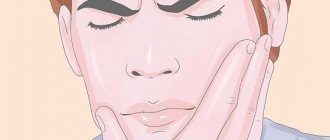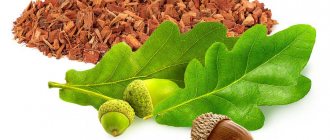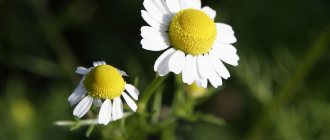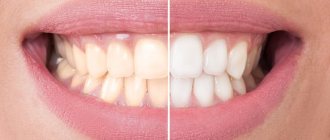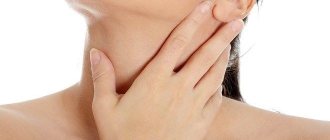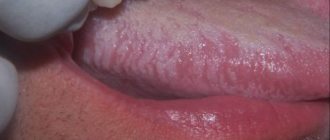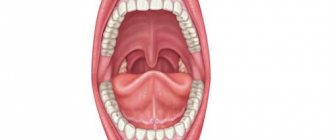Akriderm - what is this ointment for?
The medication is often used to treat dermatological diseases. It is allowed to be prescribed for:
- simple and allergic dermatitis (especially often in demand after the addition of secondary bacterial or fungal flora);
- widespread and local neurodermatitis (this also includes atopic dermatitis, simple chronic lichen);
- eczematous rashes;
- fungal infections of the skin and nail plates (dermatophytosis, candidiasis, pityriasis rosea).
It is not advisable to use it for a long time without consulting a doctor.
The Akriderm group of medications are recommended for the treatment of dermatomycosis and any skin diseases, including those complicated by secondary bacterial or fungal flora. The medications are well tolerated and effective. They help with both acute and chronic pathologies of the skin. This is confirmed by the scientific work of E.V. Matushevskaya, I.G. Shakurova, Z. R. Khismatulina “Efficacy and tolerability of drugs from the Akriderm line in the practice of a dermatovenerologist.”
Homeopathy Bittner Richard Vokara - reviews
This drug.
My husband bought it instead of the one the pediatrician prescribed because he couldn’t find what he needed. And we needed to buy something urgently, because our little daughter (1 year 8 months) developed a severe sore throat, and her temperature rose to 38.7. Of course, I was very worried at first, but after reading the instructions,
(TRANSLATION INTO RUSSIAN: The effect of the drug for tonsillitis, scarlet fever, chronic tonsillitis is aimed at eliminating the disease and symptoms. Effectively prevents chronicity (that is, long-term course) and exacerbation of the disease. Eliminates redness, swelling and pain of the tonsils, accelerates the cleansing of the surface and lacunae from plaque and pus, reduces the risk of purulent-necrotic complications, helps eliminate the focus of chronic intoxication.Helps eliminate the manifestations of intoxication: increased body temperature with chills, peripheral vascular spasm and impaired microcirculation, a feeling of fatigue, muscle pain and asthenia (a painful condition manifested by increased fatigue and exhaustion with extreme instability of mood, weakening of self-control, impatience, restlessness, sleep disturbance, loss of ability for prolonged mental and physical stress, intolerance to loud sounds, bright light, strong odors).It has a general strengthening effect on the body. Eliminates the manifestations that accompany scarlet fever, including immunopathological ones. For pharyngitis, laryngitis, tracheitis, the drug eliminates inflammation, obsessive cough and sore throat, and helps restore the structure and function of the mucous membrane. Reduces laryngospasm, makes breathing easier. For stomatitis, gingivitis, it reduces redness, pain and swelling of the mucous membrane, accelerates the healing of aphthae (small superficial ulcerations of the mucous membranes in the form of yellowish-gray round erosions or small ulcers with a bright red inflammatory rim)).
calmed down! And the next day the baby was unrecognizable!!!! She woke up cheerful and alive!!! The temperature has almost dropped (37.1)!!!! In a word, the drug miraculously improved my child’s condition in less than a day!!! And what else does a mother need: a cheerful and healthy child is the best gift!))) Most of all I like the points Contraindications and Side effects, where it says that there are none (in the photo they are circled in red!), that is, it is completely safe even for small children !)))) After this, Vokara is always in our first aid kit!!!! I wish that your children and you never get sick!!! After all, good medicine is good, but not getting sick is even better!!!
Forms, composition
The medication is available in 2 forms: ointment and cream. The creamy texture is lighter and is distributed evenly over the skin. The ointment has a thicker texture, allowing the active substance to remain on the skin longer.
Forms that differ in composition (line of external products):
- Akriderm ointment and cream 0.05% 15 g, 30 g - contains betamethasone;
- Akriderm SK ointment 30 g, 15 g - contains betamethasone and salicylic acid;
- Akriderm GK ointment and cream is a combined hormonal ointment containing betamethasone, gentamicin, clotrimazole;
- Akriderm Genta ointment and cream 15 g, 30 g - contain betamethasone, gentamicin.
Depending on the pathology, one form or another is chosen.
Betamethasone is a glucocorticosteroid. It relieves inflammation, relieves allergic reactions by reducing swelling and itching.
Gentamicin is an antibacterial component. Kills bacteria. Not active against fungal and viral agents.
Clotrimazole is an antifungal component. It is active against candida fungus, dermatophytes, yeast and other microorganisms.
Salicylic acid has an irritating effect and relieves inflammation. It also promotes the exfoliation of the stratum corneum of the epithelium.
Contraindications
Each form of medication has its own contraindications.
Restrictions on use for all types of medication:
- intolerance to the main and auxiliary components;
- syphilitic damage to the dermis;
- viral skin damage (herpes, chickenpox);
- vaccination and its skin manifestations;
- gaping wounds;
- children under 2 years of age;
- tuberculous damage to the dermis.
The list is supplemented
| Akriderm genta | Akriderm |
|
|
Undesirable manifestations
When using an external remedy, undesirable manifestations are possible, but they are mild.
Undesirable manifestations in all forms:
- local reactions: itching, burning, dry skin, folliculitis, hypertrichosis, steroid acne, allergic skin manifestations;
- when applying bandages: stretch marks, prickly heat, attachment of secondary flora, weeping;
- systemic manifestations: increased blood pressure, leaching of calcium from bones, weight gain, edema, ulcerative defects of the digestive tract mucosa, exacerbation of focal infections, menstrual irregularities, poor sleep, agitation.
The list is supplemented by the following undesirable manifestations of individual forms:
| Akriderm | Akriderm genta |
|
|
Description of the drug AKARD
When used simultaneously, antacids containing magnesium and/or aluminum hydroxide slow down and reduce the absorption of acetylsalicylic acid.
With the simultaneous use of calcium channel blockers, drugs that limit the intake of calcium or increase the excretion of calcium from the body, the risk of bleeding increases.
When used simultaneously with acetylsalicylic acid, the effect of heparin and indirect anticoagulants, hypoglycemic agents, sulfonylurea derivatives, insulins, methotrexate, phenytoin, and valproic acid is enhanced.
When used simultaneously with GCS, the risk of ulcerogenic effects and gastrointestinal bleeding increases.
With simultaneous use, the effectiveness of diuretics (spironolactone, furosemide) decreases.
With the simultaneous use of other NSAIDs, the risk of side effects increases. Acetylsalicylic acid may reduce plasma concentrations of indomethacin and piroxicam.
When used simultaneously with gold preparations, acetylsalicylic acid can induce liver damage.
With simultaneous use, the effectiveness of uricosuric drugs (including probenecid, sulfinpyrazone, benzbromarone) is reduced.
With the simultaneous use of acetylsalicylic acid and sodium alendronate, severe esophagitis may develop.
With simultaneous use of griseofulvin, the absorption of acetylsalicylic acid may be impaired.
A case of spontaneous hemorrhage into the iris was described when taking Ginkgo biloba extract during long-term use of acetylsalicylic acid at a dose of 325 mg/day. It is believed that this may be due to an additive inhibitory effect on platelet aggregation.
With simultaneous use of dipyridamole, an increase in Cmax of salicylate in blood plasma and AUC is possible.
When used simultaneously with acetylsalicylic acid, the concentrations of digoxin, barbiturates and lithium salts in the blood plasma increase.
With the simultaneous use of salicylates in high doses with carbonic anhydrase inhibitors, salicylate intoxication is possible.
Acetylsalicylic acid in doses less than 300 mg/day has a minor effect on the effectiveness of captopril and enalapril. When using acetylsalicylic acid in high doses, the effectiveness of captopril and enalapril may be reduced.
With simultaneous use, caffeine increases the rate of absorption, plasma concentration and bioavailability of acetylsalicylic acid.
With simultaneous use, metoprolol may increase the Cmax of salicylate in the blood plasma.
When using pentazocine against the background of long-term use of acetylsalicylic acid in high doses, there is a risk of developing severe adverse reactions from the kidneys.
With simultaneous use, phenylbutazone reduces uricosuria caused by acetylsalicylic acid.
With simultaneous use, ethanol may enhance the effect of acetylsalicylic acid on the gastrointestinal tract.
special instructions
All forms have the same precautions and instructions. Features of use:
- prevent contact of the medication with the mucous membrane of the eyes;
- if secondary flora is attached, you should stop using the external agent;
- The body surface area of a child is smaller than that of an adult patient, so the dose and duration of course therapy should be observed to avoid systemic manifestations.
Features of other forms
| Akriderm | Akriderm genta |
|
|
Akriderm SK
Use of the drug Vokara
Adults and adolescents: 10 drops of the drug in pure form or diluted in 1 tablespoon of water; children aged 5–12 years: 5–7 drops of the drug, diluted in 1 tablespoon of water; children from 1 year to 4 years: 1–4 drops of the drug, diluted in 1 tablespoon of water. Take the drug 3 times a day. At the beginning of treatment of an acute or exacerbation of a chronic disease, in order to speed up recovery, it is recommended to take the drug every 30 minutes up to 8 times a day until the condition improves, but for no more than 3 days, after which the drug should be used 3 times a day. When using Vokara in complex therapy together with other drugs, it is recommended to adhere to a 20-minute break between taking medications. To achieve maximum effect, it is recommended to take the drug between meals (30 minutes before or 1 hour after meals), keeping the solution in the mouth for some time before swallowing. The course of treatment for acute diseases is until complete recovery. When treating exacerbations of chronic diseases, the recommended course of treatment is 6 weeks. When treating chronic tonsillitis, it is necessary to carry out an anti-relapse course of treatment for 6 weeks 2 times a year in order to prevent exacerbation of the disease.
Analogs
Each form has its own analogue. List of structural substitutes by form (similar in composition):
| Form | Structural substitute |
| Akriderm SK | Rederm |
| Akriderm | Betamethasone-Vertex |
| Akriderm genta | Celestoderm |
| Akriderm GK | Triderm |
Non-structural substitutes contain another active ingredient. These include:
- Hydrocortisone ointment 1% - contains hydrocortisone, less effective, helps with allergic skin diseases without complications.
- Triacort - contains triamcinolone acetonide, helps with eczematous and psoriatic rashes, atopy and other skin pathologies (available strictly according to prescription!).
The choice of a substitute should be made by a doctor.
Akriderm is a popular line of external products in the field of dermatology. It is used for the treatment of skin diseases of various nature, such as complicated dermatitis (caused by allergies), eczema, neurodermatitis, and fungal damage to the skin. For each pathology, a different form of medication is selected that most effectively eliminates the symptoms of the disease. With proper use of drugs, the risk of unwanted effects is minimal.
